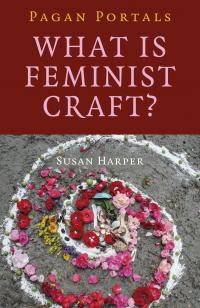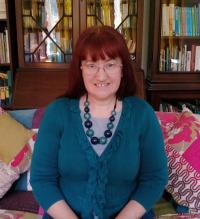
[caption id="attachment_5390" align="alignright" width="143"] Inanna with water creatures in Mesopotamian "Ishtar Vase," circa 2000 BCE.[/caption]
Inanna with water creatures in Mesopotamian "Ishtar Vase," circa 2000 BCE.[/caption]
Despite archaeologist Marija Gimbutas’s observation that water bird symbology is ubiquitous in the archeology of Old Europe, we don’t often think about the Goddess as Mother Duck. But she is
unquestionably an archetype of spring. Many world mythologies trace the beginning of the world to the hatching of a cosmic egg.
The goddess Inanna is linked with ducks through a Mesopotamian vase from the early second millennium. The vase shows the Inanna as Mistress of Animals surrounded by fish, a turtle, and ducks. Though the colors have faded, the ducks appear to have been painted with dark blue wings and red legs and head. Inanna has similar coloration. Her body and wings are red, and her hat and pubic triangle are blue. Even more suggestive, she has duck feet.
The Greek goddess Penelope is a duck goddess who wakes the world in spring, probably because bird eggs are associated new beginnings. Penelope was demoted in later mythology to the wife of Odysseus.
Imagery of the Continental Celts often combines sun symbols with ducks. A first century figurine of the goddess Sequana depicts her in a boat with a duck head on the prow. Sequana, mother goddess of the Sequani tribe, is goddess of the Seine River in France.
Young children have a fascination with ducks. Perhaps this is because wild ducks tolerate the presence of people and give children the opportunity to observe them at leisure. Like toddlers, ducks have a funny waddling gait. The appeal of ducks to children is one more thing that makes this bird the symbol of spring.
[caption id="attachment_5391" align="alignleft" width="242"] Gaulish goddess Sequana in boat with duck prow. 1st century CE[/caption]Sources:
Gaulish goddess Sequana in boat with duck prow. 1st century CE[/caption]Sources:
Gimbutas, Marija. The Language of the Goddess. San Francisco: Harper and Row, 1989.
Graves, Robert. The Greek Myths (Complete Edition). London: Penguin, 1992.
Green, Miranda. Animals in Celtic Life and Myth. London: Routledge, 1992.
Monaghan, Patricia. The Book of Goddesses and Heroines. St. Paul, MN: Llewellyn, 1990.
Monaghan, Patricia. The Encyclopedia of Celtic Mythology and Folklore. New York: Checkmark Books, 2008.
Learn more about divine animals in Hearth's latest book Divining with Animal Guides: Answers from the World at
Hand.
Categories:
0 comments on this article






